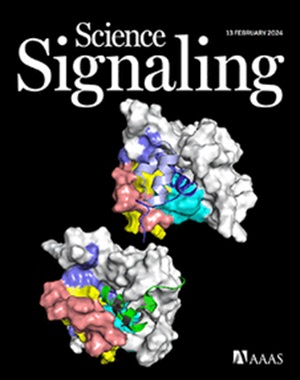在人脑组织模型中,重复性损伤通过重新激活HSV-1诱导与阿尔茨海默病相关的表型。
IF 6.7
1区 生物学
Q1 BIOCHEMISTRY & MOLECULAR BIOLOGY
引用次数: 0
摘要
在APOE4携带者的大脑中感染1型单纯疱疹病毒(HSV-1)会增加患阿尔茨海默病(AD)的风险。我们之前发现,apoe4杂合人脑组织三维体外模型中潜伏的HSV-1在暴露于其他病原体引起的神经炎症反应中被重新激活。由于创伤性脑损伤也会引起神经炎症,我们推测脑损伤可能同样会重新激活潜伏的HSV-1。在这里,我们检查了在没有或存在潜伏的HSV-1感染的情况下,一次或多次控制打击对我们的人脑模型的影响。经过反复的轻度控制打击,潜伏感染的组织显示HSV-1的再激活;β淀粉样蛋白和磷酸化tau蛋白的产生和积累(促进突触功能障碍和神经变性);以及活化的神经胶质瘤,这与破坏性的神经炎症有关。这些影响与阿尔茨海默病、痴呆和慢性创伤性脑病(CTE)共同相关,并随着额外损伤而增加,但在模拟感染组织中不存在。阻断细胞因子IL-1β可防止搔划伤后潜伏感染的单层培养物中淀粉样蛋白和胶质细胞形成。因此,我们提出,在大脑遭受多次机械损伤后,例如头部受到直接撞击或头部剧烈运动,由此导致的HSV-1在大脑中的重新激活可能导致某些个体发生AD和相关疾病。本文章由计算机程序翻译,如有差异,请以英文原文为准。
Repetitive injury induces phenotypes associated with Alzheimer’s disease by reactivating HSV-1 in a human brain tissue model
Infection with herpes simplex virus type 1 (HSV-1) in the brains of APOE4 carriers increases the risk of Alzheimer’s disease (AD). We previously found that latent HSV-1 in a three-dimensional in vitro model of APOE4-heterozygous human brain tissue was reactivated in response to neuroinflammation caused by exposure to other pathogens. Because traumatic brain injury also causes neuroinflammation, we surmised that brain injury might similarly reactivate latent HSV-1. Here, we examined the effects of one or more controlled blows to our human brain model in the absence or presence of latent HSV-1 infection. After repeated, mild controlled blows, latently infected tissues showed reactivation of HSV-1; the production and accumulation of β amyloid and phosphorylated tau (which promotes synaptic dysfunction and neurodegeneration); and activated gliosis, which is associated with destructive neuroinflammation. These effects are collectively associated with AD, dementia, and chronic traumatic encephalopathy (CTE) and were increased with additional injury but were absent in mock-infected tissue. Blocking the cytokine IL-1β prevented the induction of amyloid and gliosis in latently infected monolayer cultures after scratch wounding. We thus propose that after repeated mechanical injuries to the brain, such as from direct blows to the head or jarring motions of the head, the resulting reactivation of HSV-1 in the brain may contribute to the development of AD and related diseases in some individuals.
求助全文
通过发布文献求助,成功后即可免费获取论文全文。
去求助
来源期刊

Science Signaling
BIOCHEMISTRY & MOLECULAR BIOLOGY-CELL BIOLOGY
CiteScore
9.50
自引率
0.00%
发文量
148
审稿时长
3-8 weeks
期刊介绍:
"Science Signaling" is a reputable, peer-reviewed journal dedicated to the exploration of cell communication mechanisms, offering a comprehensive view of the intricate processes that govern cellular regulation. This journal, published weekly online by the American Association for the Advancement of Science (AAAS), is a go-to resource for the latest research in cell signaling and its various facets.
The journal's scope encompasses a broad range of topics, including the study of signaling networks, synthetic biology, systems biology, and the application of these findings in drug discovery. It also delves into the computational and modeling aspects of regulatory pathways, providing insights into how cells communicate and respond to their environment.
In addition to publishing full-length articles that report on groundbreaking research, "Science Signaling" also features reviews that synthesize current knowledge in the field, focus articles that highlight specific areas of interest, and editor-written highlights that draw attention to particularly significant studies. This mix of content ensures that the journal serves as a valuable resource for both researchers and professionals looking to stay abreast of the latest advancements in cell communication science.
 求助内容:
求助内容: 应助结果提醒方式:
应助结果提醒方式:


